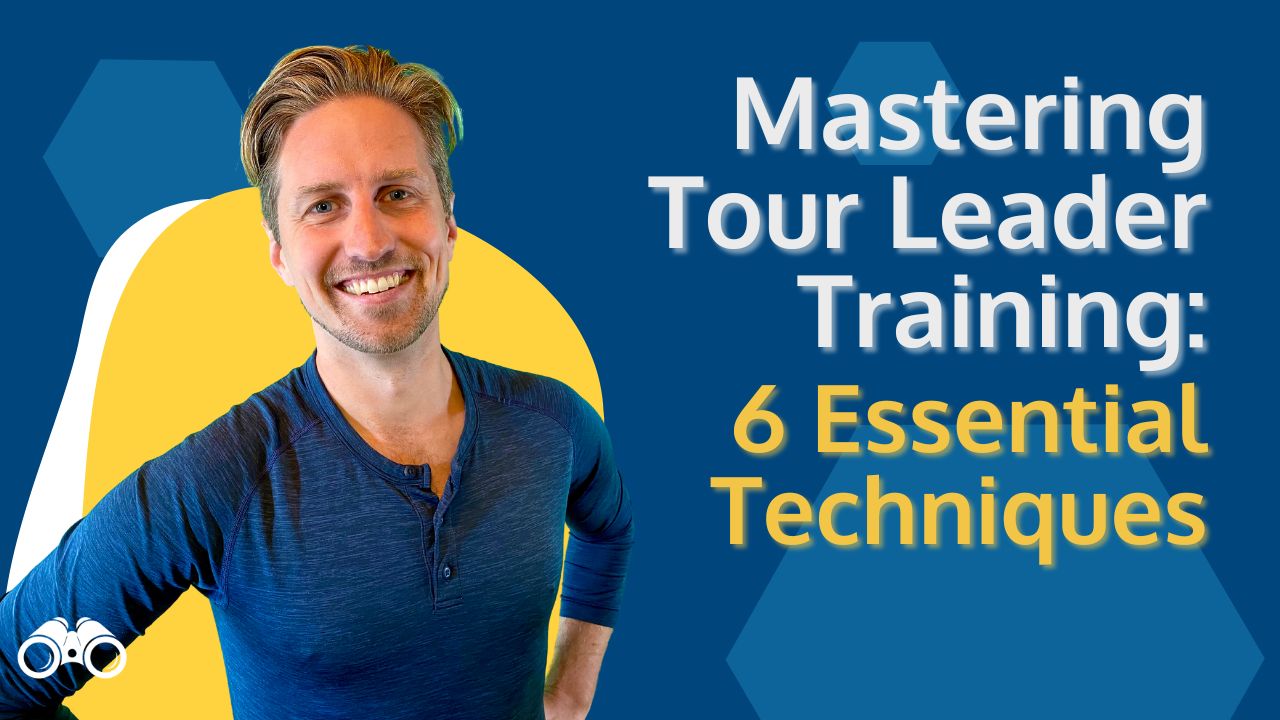Mastering Tour Leader Training: 6 Essential Techniques
If you’re not getting the 5-star reviews and repeat bookings you’re looking for, it’s worth taking a closer look at your tour leader training.
You’re no doubt training your guides. But this is a time-consuming process and one that has to be done with every single new hire.
Remember that it’s often the tour leaders who hold the key to creating unforgettable experiences that keep guests coming back and spreading the word.
Investing in a comprehensive tour leader training program is not just a nice-to-have; it’s a necessity for businesses looking to thrive in the competitive tourism industry.
By equipping tour leaders with the skills, knowledge, and confidence they need to excel in their roles, tour operators can unlock a world of benefits, from increased guest satisfaction and loyalty to higher revenue and long-term growth.
But what does a world-class tour leader training program look like? Of course it follows training best practices. But it goes beyond the basics of route memorization and scripted presentations. To truly set their businesses apart, tour operators must embrace a multi-faceted approach that combines proven techniques, ongoing support, and a commitment to continuous improvement.
Backstage vs. Front Stage Training
Before we dive into the six techniques, let’s introduce one final concept: the idea of backstage and front stage training. This was shared with me by one of our amazing coaches, Simon, who worked for many years recruiting and hiring for Fat Tire Tours, an incredible tour company that scales across multiple cities in Europe and even into North America.
Backstage training happens away from your guests, while front stage or front of stage training takes place in the presence of guests. For each one of these techniques, I’ll share whether it’s happening backstage or front stage.
1. Classroom or Presentation
Classroom or presentation training is backstage, with no guests present. It’s what we think of when we imagine a traditional training setting, where information is passed from one person to another, or one person to many. We can make this more engaging with handouts, visual aids, or activities and exercises during the presentation.
The biggest mistake we see tour operators making with classroom training is that much of this content can actually be recorded and put into a video format. This means that your new staff or staff year after year can use these same videos and get this training at any time, anywhere.
2. Experiential Learning Activities
Experiential learning activities involve tasking a group with a challenge or exercise where trainees are put through an actual experience, followed by a period of reflection or debrief. The theory is that trainees often learn best or recall better when they have this firsthand experience doing something instead of just passively receiving information.
The biggest mistake we see is that many tour business companies simply don’t use experiential learning activities, or they might use them exclusively for team building. Role-playing scenarios, such as handling upset guests, can be a powerful way to work on the soft skills of your tour leaders and prepare them for real-life situations.
3. Route Training or Familiarization
Route training or familiarization is backstage, with no guests present. The trainee is given instructions or documentation and can go and familiarize themselves with the tour route, meet important suppliers, contractors, or venues, and find key logistical information.
The biggest opportunity here is to have better, stronger, and more detailed tour documentation. If you are reliant on a key trainer or yourself, that is a financial or time cost that keeps happening year after year. Having robust tour documentation allows these familiarizations to happen on their own or without a trainer present.
4. Shadow Training
Shadow training is our first front stage technique, where the trainee accompanies a live tour as an observer. They are tasked with taking notes and watching carefully how the tour goes, but most importantly, they are not to have a negative experience on any of the other guests who are participating.
The most common, most painful mistake made with this technique is not debriefing afterwards. Setting aside time for your trainer and trainee to get together after a shadow tour to talk about what happened and answer the trainee’s questions is crucial.
5. Training Tour or Reverse Shadow
The training tour, or reverse shadow, is also front stage. The trainee is tasked with leading the tour, hosting and being in charge of the entire experience, while a trainer or experienced guide tags along as an observer.
The most common mistake we see with this technique is that most tour companies just don’t do it. They simply have someone shadow a couple of their experienced tour leaders and assume that the trainee must have gotten everything through observation, without following up with a training tour where the trainee can be observed in action and given real-time feedback afterwards.
6. Coaching, Mentoring, and Ongoing Training
Coaching, mentoring, and ongoing training happen backstage, with no guests present. This involves working with that contractor or employee after the initial training period. We highly recommend having systems in place that are set up at the start of the season and communicated with those new hires, such as a post-training check-in, a mid-season check-in, and an end-of-season evaluation.
The biggest mistake we see with this training technique is that it simply isn’t happening. Someone has essentially said, “Okay, training is over,” and there’s no investment in soft skills development or helping them develop into stronger tour leaders.
Final Observations and Considerations
- There’s an important distinction between employees and contractors/freelancers. You cannot force a contractor to attend company training, but you can include key deliverables and conditions in their contracts.
- You are required to pay for training for many of your employees. It is often a legal requirement to pay for these types of professional development opportunities.
- Debriefing is crucial for experiential learning activities, shadow tours, and training tours. The debriefing cycle has three key components: What happened? So what? And now what? This is an opportunity to discuss observations, techniques, behaviors, and language used, and how these insights can be practically applied by the trainee on future tours.
By implementing these six essential training techniques and avoiding common mistakes, you can build a culture of constant, never-ending improvement in your tour business. Investing in your team’s development will lead to exceptional guest experiences and long-term success.




